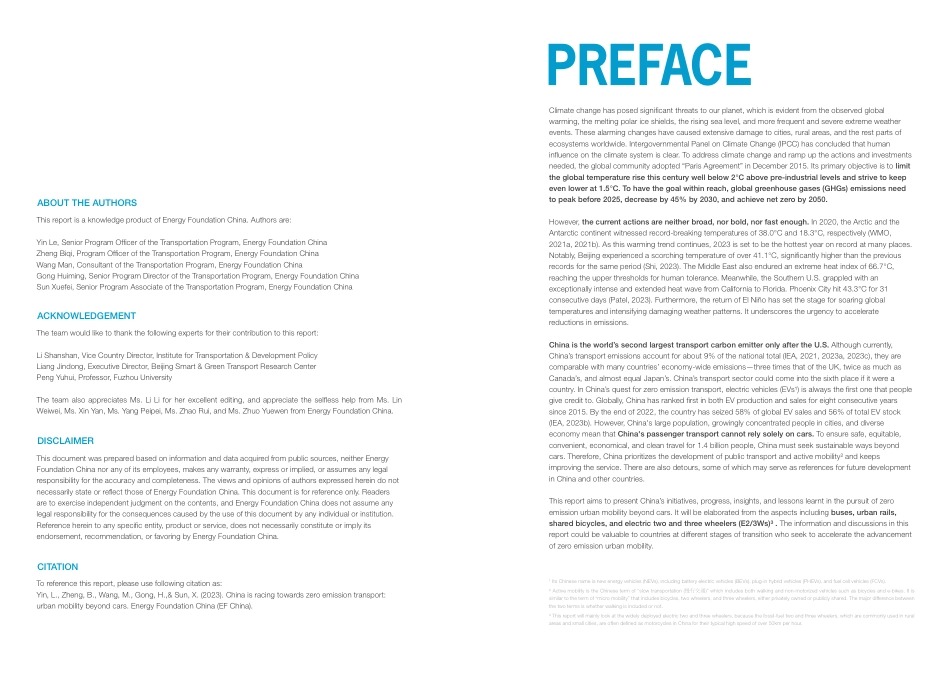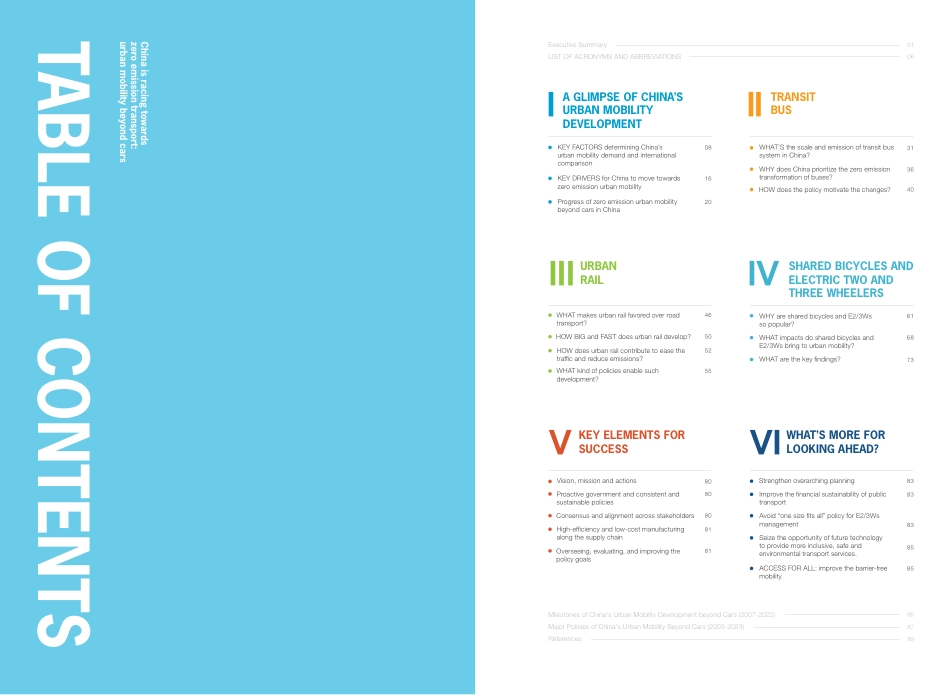urban mobilitybeyond carsChina is racing towardsemissionroad transporturban mobility beyond carszeroPREFACEClimate change has posed signifcant threats to our planet, which is evident from the observed global warming, the melting polar ice shields, the rising sea level, and more frequent and severe extreme weather events. These alarming changes have caused extensive damage to cities, rural areas, and the rest parts of ecosystems worldwide. Intergovernmental Panel on Climate Change (IPCC) has concluded that human infuence on the climate system is clear. To address climate change and ramp up the actions and investments needed, the global community adopted “Paris Agreement” in December 2015. Its primary objective is to limit the global temperature rise this century well below 2°C above pre-industrial levels and strive to keep even lower at 1.5°C. To have the goal within reach, global greenhouse gases (GHGs) emissions need to peak before 2025, decrease by 45% by 2030, and achieve net zero by 2050. However, the current actions are neither broad, nor bold, nor fast enough. In 2020, the Arctic and the Antarctic continent witnessed record-breaking temperatures of 38.0°C and 18.3°C, respectively (WMO, 2021a, 2021b). As this warming trend continues, 2023 is set to be the hottest year on record at many places. Notably, Beijing experienced a scorching temperature of over 41.1°C, signifcantly higher than the previous records for the same period (Shi, 2023). The Middle East also endured an extreme heat index of 66.7°C, reaching the upper thresholds for human tolerance. Meanwhile, the Southern U.S. grappled with an exceptionally intense and extended heat wave from California to Florida. Phoenix City hit 43.3°C for...



